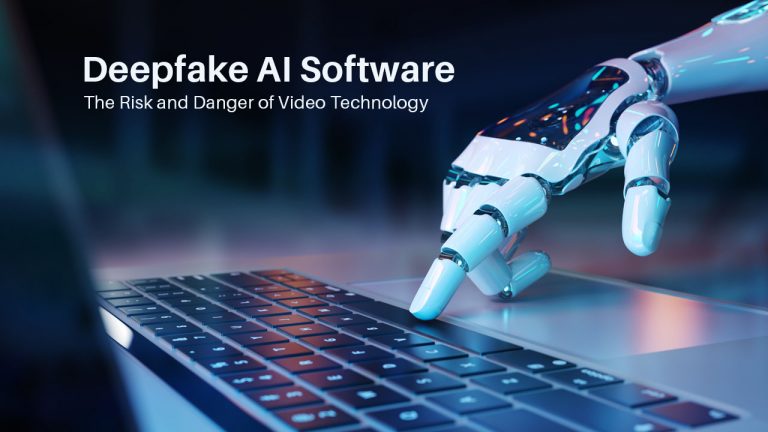While technological advancements are increasingly becoming sophisticated, we are left to question if these advancements are eventually going to replace human work (not that it’s not already happening in the present). There’s a limit about how much a man can do, but with technology, everything just seems so incredibly doable. It’s amazing how technology can do so many things— a fact that’s both incredible and terrifying.
Artificial Intelligence (AI) has been immeasurably useful in many day-to-day applications today. From chatbots, Internet of Things devices (IoT), smart devices like smart cars, to various industries such as in banking, healthcare, and logistics, all use AI to make operations easier and to provide superb experience to users of any services to which the technology is applied. We have been putting AI to work all this time.
With Artificial Intelligence, machines learn from experience, adjust to new programs and tasks that humans do. AI and Machine Learning are now being used in cybersecurity where they detect and respond to malicious and suspicious behaviors online. While they are used for the good, the possibility of using them for bad modus cannot be ruled out. There’s one area of Artificial Intelligence that has been receiving quite a buzz since it first surfaced across the Internet — the Deepfakes.
In this post, we take a good look at the potentials of Deepfake and the risks and dangers of using this kind of video technology.
The Truth About Deepfake AI Software
Deepfakes refer to manipulated media — often video but sometimes audio that was created or altered using an AI function called Deep Learning. Deep Learning works as a powerful subset of machine learning that uses neural networks to mimic the functions of the human brain in processing even the smallest patterns to learn, detect objects, recognize speeches, understand languages, and even making decisions in any situations without human supervision.
By the name itself deep “fake”, these digital representations are sophistically produced using artificial intelligence to fabricate images and sounds to purposely manipulate the audience to think the content they portray is real.
Camera apps have become trailblazing at such an increasing rate allowing users to manipulate images the way they want. From adding filters that enhance images to photo manipulation that allows users, removing facial imperfections like moles and pimples, enhancing facial features to the point of creating another unique or common face, and to as far as mimicking voices, this AI technology paved the birth of Deepfake media which have both positive and negative implications to the current digital media depending on how it is used.
When it comes to AI Technology, one personality has been making breakthroughs in the world of Artificial Intelligence and Machine Learning —- Ian Goodfellow, who is now the Director of Machine Learning in the Special Projects group in Apple. Deepfake technology is based on Generative Adversarial Networks (GANs), a class of machine learning frameworks that started as a Ph.D. thesis study by Ian Goodfellow and his colleagues in 2014. GANs work through a training set where it learns to generate data with the same statistics as the training set. This training results in GANs able to mimic photographs and generate new ones that look at least superficially genuine to the audience by having realistic characteristics. This technology displays a trick eye to human observers, therefore, deceiving their reality. A seasoned GAN can create a video clip of a completely manipulated human sequence.
Goodfellow’s creation of GANs paved the way for researchers to create computer-generated photos of people’s faces that are realistic enough for them to look like they exist in real life. His technique paved the way for advanced AI to create the controversial “deep fake” videos that even contain realistic-sounding audio voices of the subject.
The Risks and Dangers of Deepfake Technology
A scenario:
You click on a news clip you found on social media and see Philippine President Rodrigo Duterte at a press conference or having a dialogue with a foreign leader. The setting was real that you think of it as real and shared it among your friends on your timeline. Soon enough the video was spread among peers and became viral. Only later did you learn that the footage wasn’t real because the person you just watched was not actually the President but somebody else whose head was superimposed by that of the president and used his actual voice to produce a hoax. This is only one of the many ways that media can be manipulated and news become “fake news”.
Celebrities and public figures are often the ones susceptible to this scheme since algorithms require sufficient video footage to create a deepfake. This is something that popular personalities have that makes them perfect targets for fake media. Deepfakes are often used to gaslight the population about certain people. Celebrities who are used to a certain amount of public hating, have expressed horror and are threatened by images and videos of their heads superimposed to other people’s bodies for malicious purposes such as pornography, or as a form of bullying, challenge their credibility or to raise issues that aim to threaten populations and authorities.
Deep Fakes are relatively a new twist to media manipulation. GANs offers us a new way to manipulate media, using it for both good and bad. No matter how it is used, its main purpose is to let the audiences think of the material as real despite being a digital imposter, deepfakes are still a form of fraud that needs to be regulated.
As technology becomes more and more sophisticated, deepfakes today have become more difficult to identify. However, it still leaves us some gateway to detect the real ones from the fake. Here are some common indicators that the material is a deepfake:
- Deepfake faces may blink unnaturally.
- Lip-synching may be off from the audio.
- Deepfake teeth may look unnatural.
- Deepfakes skin may look patchy.
- Hair movements may be unnatural.
Deepfake technology and the whole AI industry, in general, are improving way faster than many believed they would. It challenges our assumptions about the real things and the not. Deepfakes are just one example of how far technology can lead us that it even challenges and impersonates our reality.
Opportunities and Threats of Deepfake to Digital Marketing
Over the years, artificial intelligence and deep learning have improved so much that their impact has made industries from news, finance to marketing thrive towards today’s technological advancement. Despite the threats that deepfakes have, this can still post boundless opportunities for digital marketers. From entertainment to advertising, using deepfake media for the purpose of marketing can put a good twist to traditional digital marketing strategies, especially in the field of video marketing by producing higher-quality digital content. Using this technology as a good advantage offers a more dynamic journey for consumers in their decision-making. Imagine creating a deepfake version of dead artists, scientists, and other famous personalities to do the ads for brands, it could potentially gain the interests of consumers which in turn results in conversion and patronage.
Developing trust with the consumer is important to businesses and is an important goal for any digital marketing efforts. But since deepfakes are somewhat considered to be one of the dark sides of the Internet, where consumers often become victims of clickbait and fake news, this could impact business strategies in a significant way depending on how it will be used in marketing. Fake news circling the Internet impacts the way consumers digest information on the things that the digital world presents. This manner then becomes a determining factor for consumers on how they view the credibility of brands, base their purchasing behavior, and the degree of impact the brand or business will have in them. This, therefore, constitutes a need for more awareness, legislation, and understanding.
AI technologies present a multitude of opportunities for digital marketing. With various complex technologies such as deepfakes that are available for people for use for multiple purposes, some of which are open-source, free, and easy to use, such technologies are bound to be at risk for exploitation by essentially anyone especially those with deep knowledge of such technological advancements.
Companies that rely on digital marketing in making their brand relevant in the business world must seriously consider how this mind-blowing technology be integrated into their business model. Digital marketing strategists, therefore, must consider all aspects of deep fake technology in order to use it as an opportunity to improve their marketing strategies rather than becoming a threat that may potentially damaging effects for both the company and its potential consumers.















